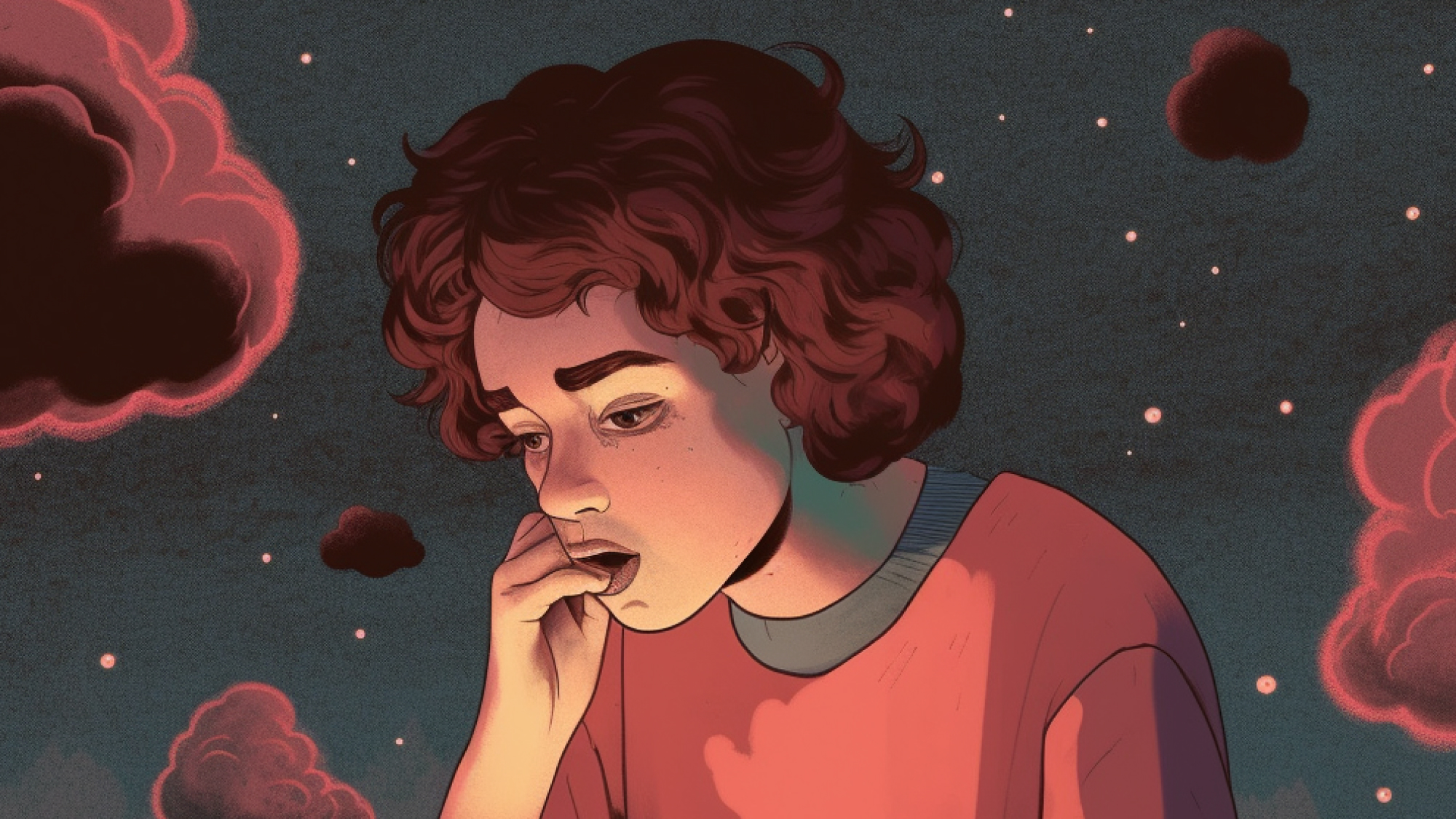
When we feel emotion, we use the term ‘heartache’ or a ‘gut-wrenching pain’ to describe the feelings.
While we have already noted that emotions itself are processed in the limbic system of our brain, that’s not to say that these feelings aren’t felt in the heart. In fact, with certain emotions, we’re often accompanied by physiological responses such as increased heart rates and perspiration. Even, with something like love or nervousness, we feel what can only be described as ‘butterflies in the stomach.’
Although it is true that emotions are constructed in the human brain, these signals are then sent to other parts of the body as a survival mechanism to help us be more alert of the potential threat, whether positive or negative experiences.
The link between the brain and heart
So, with these exchanging signals, there is definitely a link between the brain and heart.
In the most literal sense, the brain and heart are connected via the vagus nerve, an important component to the nervous system. This system is important to digestion, heart rate and your overall immune system, acting involuntary — meaning they cannot be controlled.
The relationship between the brain and heart was first noted by the famous psychologist, William James, as his theory known as the James-Lange Theory of Emotion posited that human emotion was triggered from physiological changes in response to external events.

Since then, a wide range of research has come out further solidifying the heart-brain connection. For example, the emotional stress we experience when losing a loved one has shown to cause a cardian condition known as Takotsubo cardiomyopathy. This condition has been likened to the same effects of a heart attack. So when we say we are heart-broken, we may not be speaking figuratively.
Even feelings of depression has been associated with increased risk of coronary artery disease and congestive heart failure. For example, in one study, they found that depressed patients had a disturbed regulation of the autonomous nervous system —which regulates heart rate. These very patients had a higher heart rate in comparison to their healthy, non-depressed counterparts.
Another study found that patients with stress-related disorders had a higher risk of cardiovascular disease. Going both ways, findings have shown that there is a significant association between cardiovascular diseases and increased risk of Alzheimer’s disease as well.
Oxytocin: Love in our heart and brain
This heart-brain connecting does deeper, even when we look at the love hormone, oxytocin. This neurotransmitter is released from the brain — the posterior pituitary to be exact — when we are excited by a partner, are in love, or even something simpler like a hug or kiss.

Besides the pleasant feelings we’re washed away with, the release of oxytocin can lower blood pressure and heart rate through the brain, heart, and even blood vessels. In other words, when we feel love, it is quite literally running through our veins.
Heartbreak in the brain
Heartbreak, whether its from losing a loved one or feeling socially isolated, is nothing to take lightly. The pain we feel from it isn’t merely psychological. In fact, research shows that even the feeling of being disconnected have both physical and psychological pains, each triggering the same neural mechanisms.
According to Tchalova & Eisenberger (2015) on the neuroscience of heartbreak,
“Just as physical pain protects animals by drawing attention to the site of the physical injury and motivating appropriate restorative action, social pain may signal potential estrangement from one’s social network and motivate restoration of belongingness.”
There is evidence supporting a key overlap between both physical and social pain. Even opioid drugs like morphine — which help to reduce physical pain — have been shown to alleviate the feeling of loss as well.
For example, in one study on the neuroscience of social pain, they got a bunch of participants to play a computerized ball-tossing game with the other players believed to be real people. When the ball-tossing was programmed to exclude specific players — inducing a sense of social exclusion — the brain scans of these very participants showed increased activation in the dorsal anterior cingulate cortex (dACC) and the anterior insula (AI).
This is important to note as the dACC is involved in evaluating social processes such as rejection, and the AI region is associated with socioemotional input (eg: responding to someone’s happiness).
Another study also compared thermal (physical) pain to the social pain of looking at an ex-partner who broke up with them. The results showed that was an overlap between activation in the same regions — dorsal anterior cingulate cortex (dACC) and the anterior insula (AI) in response to both types of pain.
What this all means is that social exclusion, rejection, isolation and other social pains like these are no different than the physical pain we may feel from getting burnt or hit. They are one in the same.
A healthy heart & mind
Seeing that there is a top-bottom, bottom-up relationship between a heart and brain, maintaining both can help save you in many ways, preventing you from getting conditions like heart disease, strokes, and dementia.
- Manage blood pressure — One of the leading causes of heart disease and strokes is high blood pressure. When we have too much high blood pressure, this can put stress on the blood vessels, which increases the risk of dementia. For this reason, its important to get checked up regularly to know how high your blood pressure is, and whether its through medicine or exercise, adjust it accordingly.
- Eat healthily — We all know that eating is important to maintaining good weight, but also helping you remain healthy. Foods that are rich in omega-3 fatty acids, such as fish, protect the heart. And of course, as much as you may hate it, eat your vegetables and fruits.
- Stop bad habits — From smoking to drinking alcohol, bad habits like these damage blood vessels, raises blood pressure, and can increases the likeliness of getting heart disease and strokes.
Interoceptive awareness
To take things a step further, beyond the given action above, it might be good to learn to become more interoceptive aware. Interoceptive awareness is an ability to identify, understand, and respond to internal signals, appropriately.
Children who have interoceptive training early on have shown to have huge advantages in their life, from emotion regulation to better planning and strategizing. Studies have also shown that after just a week of interoceptive training, participants had improved decision-making and reduced anxiety.
Interoceptive awareness skills help to improve daily living by simply making us more aware of the sensations that go through our body when we feel something and learning how to respond more effectively to the emotions within us. Instead of stressing out immediately, we can train ourselves to react more appropriately, understanding how to identify these moments quickly and prevent it from snowballing into madness.










